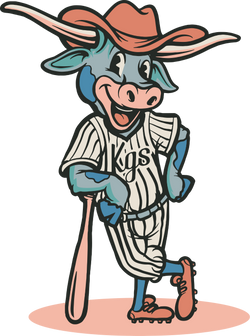The Future of Catching: Adapting to Change and the Enduring Relevance of Training Receiving Skill
As the game of baseball continues to evolve, catchers face new challenges and opportunities in the changing landscape of their position. From modern setups and receiving philosophy to improved pitch shapes and better training environments, the game demands a high level of focus and dedication from elite catchers. With the potential implementation of automated strike zones at the professional level, catchers are seeing a significant shift in one of their most important skill requirements. In this article, we will discuss the future of catching, exploring the implications of automated strike zones, the shifting priorities in catching skills, the evolving nature of catching training, and the enduring relevance of receiving skill.
1. The Advent of Automated Strike Zones:
First, let’s talk about the automated ball-strike system (ABS). The introduction of an automated strike zone aims to enhance the accuracy and consistency of ball-strike calls. This system utilizes pitch tracking technology to determine whether a pitch is within the strike zone or not based on location and strike probabilities. While the specifics of its implementation may vary, it is expected to reduce the reliance on human umpires and their interpretation of strike zone boundaries. Automated strike zones would allow for more objective and standardized calls, minimizing the influence of subjective factors. This is a direct result of an enhanced scrutiny on umpires and their decisions regarding strikes and balls in recent years. With the MLB adding technology and new rules to the game, ABS would standardize calls made on the biggest stage and remove the human element that has been a part of baseball for generations. However, the implementation of ABS will likely blend automation with the purity of the game that has existed since modern baseball was created.
Enter, the challenge system. The challenge system has been tested for a few years in the MiLB and in select independent leagues; this challenge system would allow catchers, hitters, and pitchers to challenge pitch calls made by an umpire as soon as the call is made. Where applicable, a recreation of the pitch would be displayed on the jumbotron for all to see. Then, play would resume as normal after the call is confirmed or corrected. Players seem to be in favor of the challenge system on both the offensive and defensive sides of the ball. From an entertainment perspective, thousands of fans holding their breath to see the pitch result in a big situation sounds fun. Furthermore, catchers take pride in their ability to receive the ball well and earn strikes for their pitcher. It seems that if ABS is going to make its way into the League, the challenge system is the best way to satiate the fans who don’t appreciate the human element to calling balls and strikes while preserving defensive traits of catchers who help their team with plus receiving skills. It should be worth noting that umpires have become more and more accurate (~92%) in the last decade (for a deeper explanation, see https://blogs.fangraphs.com/we-may-never-find-out-how-good-umpires-can-be/)
2. Reprioritizing Catching Skills:
With the adoption of automated strike zones, the emphasis on receiving skills may become less prominent at the Big League level than it is right now. Catchers will likely need to adapt and redefine their core competencies to remain valuable assets on the field. While receiving skills will still be relevant at the professional level, catchers will need to maintain focus on the other essential aspects of their position, such as game management, leadership, pitch calling, blocking, throwing accuracy, and building strong relationships with pitchers. This is where the intangible assets of a good catcher will become most important (game management, leadership, relationships with pitchers…). However, another important task comes from the implementation of ABS in knowing the strike zone. This will hold especially true if the challenge system is implemented as we think it will be. Catchers will need to receive, block, and throw well, call good games, and reinforce all intangible skills while also understanding the electronic strike zone at a high level. There should be no reason a strike is lost if a challenge is available.
3. Evolving Catching Training:
As catching skills are reprioritized, the nature of catching training will likely undergo significant changes. Coaches and catchers alike will need to shift their focus from predominantly refining receiving techniques to developing a more holistic skill set. Training programs will incorporate elements that enhance game management, pitch calling, defensive positioning, agility, block and throw skills, communication, and understanding the zone. Catchers will need to bolster their skills as strategic thinkers, capable of analyzing the game, managing the pitching staff, and making crucial split-second decisions. That said, receiving training in off-field environments will continue to be an important aspect of development, especially at the amateur levels. Regardless of the implementation of ABS at the professional level, the ability to receive well will be a necessary trait for younger catchers. Collegiate programs will still want their backstops to control the strike zone and add value with their glove. As we continue to say, catchers should take pride in their ability to maintain strikes and earn borderline pitches for their team.
4. The Enduring Relevance of Receiving Training:
While automated strike zones may alter the landscape of professional baseball, the relevance of the training receiving skill at the amateur levels remains unwavering. As mentioned, at these levels, catchers will continue to be responsible for receiving the ball and maintaining strikes. As it pertains to KGS, the CRT Belt helps catchers develop more efficient receiving mechanics while understanding how strength should be applied to receive the pitch well. By developing these nuanced mechanics of how we approach and present the pitch, catchers will continue to strive to dominate the zone. This includes refining your setups, angles, posture, timing, etc. while receiving. Regardless of your glove actions, how you help your pitchers execute pitches is a huge part of being an elite receiver. If your goal is to get to the Big Leagues, you should do everything in your power to achieve that dream. As you work through your career, making sure that you are proficient in all areas of the position (including a continued focus on receiving the ball well) is a step towards achieving that dream. Keep getting after it on all fronts and outwork anybody else in your training.
To wrap up, the future of catching in baseball is most certainly uncertain. With the potential implementation of an automated strike zone, the role of catchers will likely shift towards a more comprehensive set of skills and priorities. However, even with these changes, the importance of receiving pitches effectively will remain at the amateur level, and tools like the CRT Belt will continue to be valuable for catchers at all levels. As the game of baseball continues to evolve, catchers will need to adapt their training and skills in order to remain effective and valuable members of their teams. To see some of the comments on ABS made by MLB commissioner Rob Manfred, click here: https://theathletic.com/4362682/2023/03/29/rob-manfred-automated-strike-zone/.



